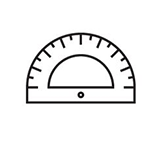석질운석 Ghubara Meteorites L5
판매가 상담
할인판매가 총 할인금액 원 (모바일할인금액 원)
적립금
- 0원(0%)
-
원 %
-
원 %
-
원 %
-
 원 %
원 %
-
원 %
-
원 %
-
원 %
-
원 %
| 국내/해외배송 | |
|---|---|
| 배송비 방법 | 택배 |
| 배송비 | 4,000원 (50,000원 이상 구매 시 무료) |
| 수량 |
|
| 상품 정보 | 가격 | 삭제 |
|---|---|---|
| [총 상품금액(수량)] 0 (0개) | ||
Ghubara Meteorites
Meteorites--Ghubara, Oman
뷡ocation: 19? 13' , 40" North Latitude; 56 ? 8 ', 34" East Longitude.
뷪ype: Olivine-Hypersthene Chondrite (L5) Black xenolithic, unequilbrated host.
뷚ound: 1954
뷒nalysis: 21.33% iron.
Where you see a picture with a border, click the photo for a still-larger image.
GHUBARA L5 METEORITE PUZZLE
The "Ghubara" meteorite is found on the surface of the desert in Ghubara, Jiddat Al Harasis, Oman. The first sample recovered by the British Museum of Natural History in 1954. Other samples were recovered in 1956 and 1958. Making a total known weight at that time of 254 kg. Since the original find 100's of more pieces have been recovered, making the current find weight over 500kg. The meteorite is a gas-rich regolith breccia L5 meteorite with xenolithic inclusions. Xenolithic means it is composed of different mixed lithologies. In other words, inclusions within the matrix which are un-related to the host matrix itself. Sort of like two meteorites in one. This is visible on some Ghubara slices as large white regions. A Bills did a wonderful job of explaining the xenothic nature in meteorites in "Cognate xenoliths in chondritic meteorites: Examples in Mez?Madaras and Ghubara" (March, 1968, Geochimica et Cosmochimica Acta, vol. 32, Issue 3, pp.299-306 ): "Xenolithic structures in chondrites imply formation of these stones over a definite interval of time. Vein structures predate xenolithic structures in some stones, but in others they were formed later. The host portion of many xenolithic chondrites has itself suffered recrystallization or metamorphism. Relatively uniform oxidation conditions were maintained during evolution of particular xenolithic chondrites. The apparent lack of mechanical mixtures between material belonging to different chemical-mineralogical classes suggests independent origin and evolution of these classes. Metallic particles in Ghubara display a martensitic microstructure and have nickel contents intermediate between those of typical chondritic kamacite and taenite. This stone has either been reheated, or cooled rapidly from the high temperature at which it formed through the duplex region in the system Fe-Ni."















 확대보기 및 상세정보
확대보기 및 상세정보